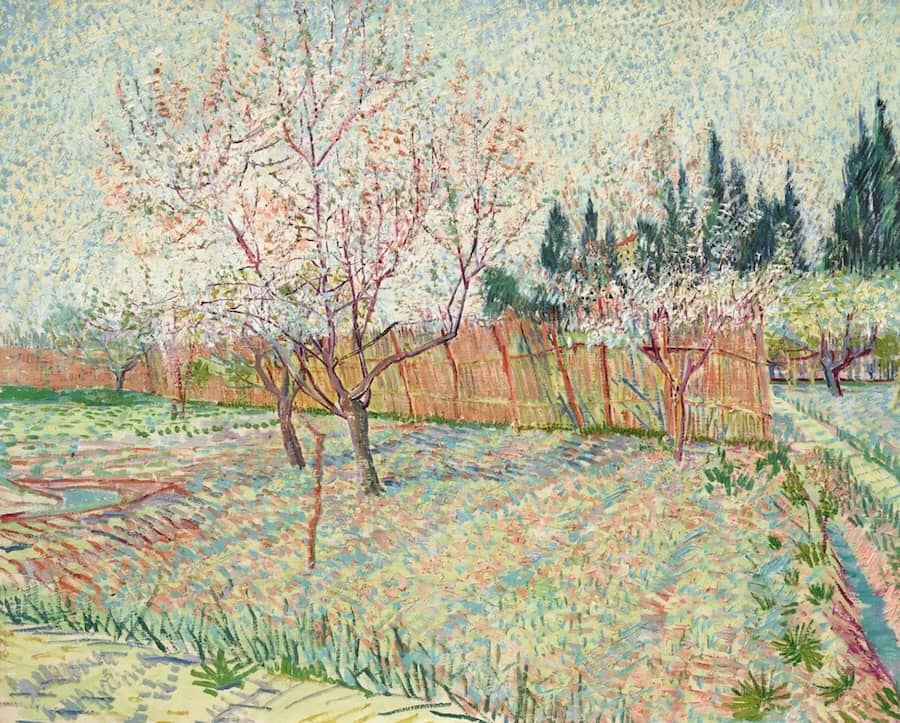Orchard, Springtime, 1888 by Vincent Van Gogh

In Orchard, Springtime, one of the most Impressionist of all van Gogh's works, he attempts to capture not so much a quality of light and atmosphere as of things, things that are, however, the airiest and lightest and most akin to sunlight - the blossoming trees. The orchard is sparse, its blossoms immaterial, and therefore merging with a sky that is itself like the blossoms in the delicate tiny spotting of white and blue. A like spotting colors the ground, a rare soft blend of warm blue and lilac and light yellow tones, like the blend of the blossoms and the cooler sky. Earth and sky seem made of the same transparent substance - tiny particles of pure vibrant color.
The methodical Impressionist touch and division of tones is no strict formula here. The trees are drawn in outline and the beautiful fence in long parallel strokes. The dark inky blue trees in the distance are as delicate and weightless as flowers, yet very precise; the fence, a fine spectral film; the shadows cast by the trees, a joyous striping of gay blues, light and dark. Every object, every division of the ground, has its own peculiarity of color and touch, while all unite in the common diaphanousness and brightness to exhale an unearthly sweetness and charm.




















